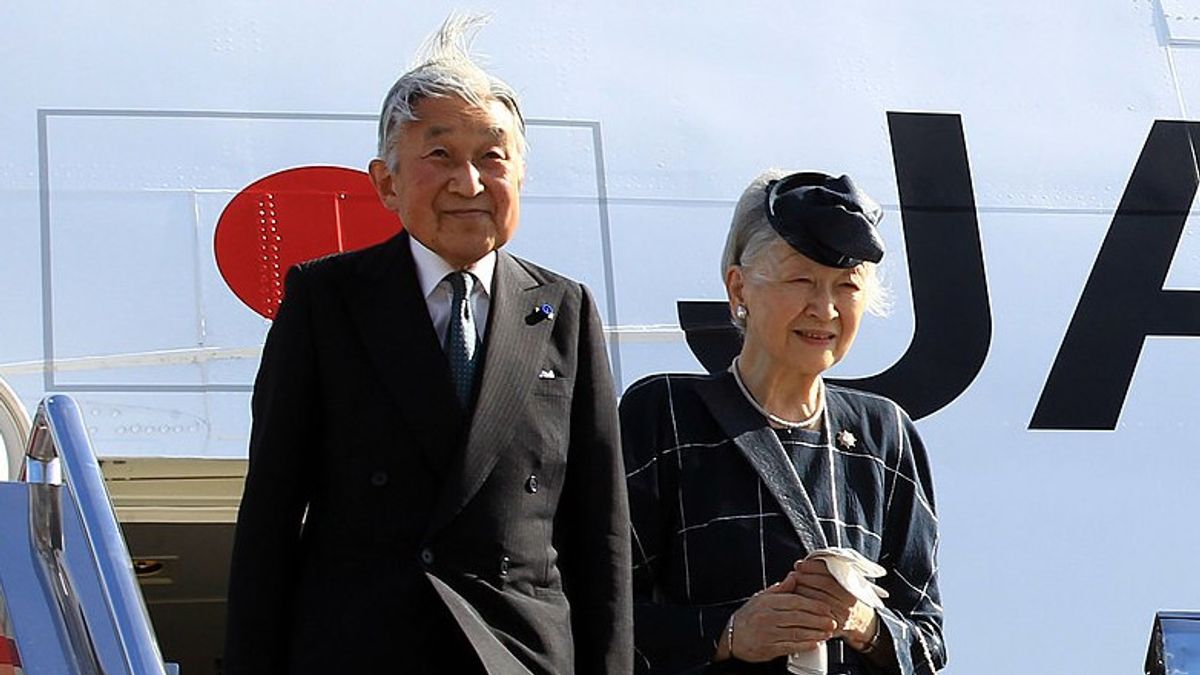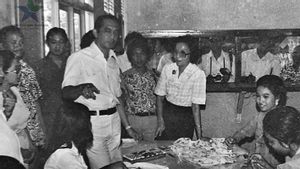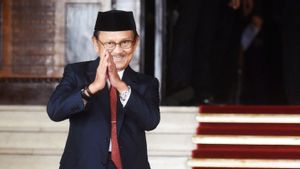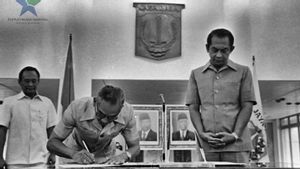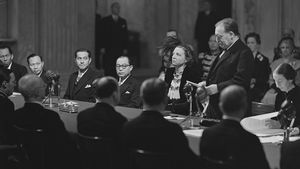JAKARTA - Relations between Indonesia and Japan had fallen to their lowest point. Japan once colonized Indonesia. However, the two of them did not want to drag on each other. The peace agreement was perpetuated. The results were brilliant. Relations between Japan and Indonesia are increasingly intimate.
In the New Order (Orba) era, for example. President Suharto and Emperor Akihito are like two best friends. The two visit each other and give each other a unique gift: Fish. The fish diplomacy later became a symbol of the warm relations between the two countries.
Memories of Japanese colonialism are not easily forgotten in the minds of native people. Japan acted wildly by making indigenous people forced workers. They are employed in all fields. From matters of war to lust.
That period became one of the darkest phases in the history of the Indonesian nation. Hatred was awakened because of it. Instead of seeing Japan as an Older Brother, natives see it as nothing more than an oppressive country.
The natives felt cheated and abandoned by the Japanese. This condition lasted until Indonesia's independence. As a result, the Indonesian people no longer want to have relations with Japan. The narrative was chanted because no host was able to make peace with the thieves (colonizers).

This condition did not last long. The two countries finally tried to end the conflict by agreeing to make peace during the reigns of Bung Karno and the Old Order. Japan wants to make peace with Indonesia. Vice versa. The ingrained hatred must end, he said.
The two countries agreed to sign two agreements. First, the peace treaty. Second, the agreement on reparations of war. The decision made Indonesia a big profit. Indonesia can build a lot because it gets a large injection of funds from Japan. Therefore, the two agreements were the starting point for establishing good relations between Indonesia and Japan.
“On December 9, 1957 a draft of the reparations agreement was drafted, and finally on January 20, 1958 the agreement document was signed by the Minister of Foreign Affairs Fujiyama Aiichiro and Subandrio. The 1958 war reparations agreement was part or derivative of the 1951 San Francisco agreement. These two agreements became a new basis for bilateral relations between Indonesia and Japan after decades of previous relations with Indonesia were not considered as Indonesia but as the Dutch East Indies under the Dutch colony."
“This agreement is divided into two, the first is a peace agreement and the second is a war reparation agreement. For peace agreements, regulate matters related to the desire to end the status of war and create a peaceful situation between the two countries. This agreement contains seven articles, and the reparations that must be paid by Japan are regulated and stated in article 4 of the agreement," said Moh. Gandhi Amanullah in the book Matahari Khatulistiwa: Hubungan Indonesia - Jepang dalam Perspektif Sastra dan Sosial Budaya (2020).
Fish Diplomacy
The close relationship between Indonesia and Japan also continued in the Soeharto and New Order eras. President Suharto considers Akihito like a friend. Familiarity arose from mutual visits of the two national figures. Even so, at that time Akihito, who had the status of a prince, first set foot in Indonesia during the Old Order era in 1962. He was then awarded by the Indonesian Government 60 kumpay goldfish sent directly from Bogor to Japan.
Soeharto was the other way around. He was only able to visit Japan when he officially became President of Indonesia. Soeharto's most memorable visit to Prince Akihito was when he visited in 1989. That year Suharto came to express his condolences on the death of Akihito's father, Emperor Hirohito.
Since then, the closeness between Suharto and Akihito, who later ascended the throne to become Emperor, has continued to build. The climax of this closeness was seen during Emperor Akihito's visit on October 3, 1991. His arrival at Halim Perdana Kusuma Airport, Jakarta was greeted with thunderous fanfare.
Indonesia as the host is ready to provide accommodation for 50 group members. The event was even covered by 80 domestic and foreign journalists. From radio to television. The delegation was immediately invited to the Merdeka Palace.
Suharto and his wife, Siti Hartinah (Mrs. Tien) warmly welcomed the arrival of Emperor Akihito and Empress Michiko. The Japanese national anthem Kimigayo and the Indonesian national anthem Indonesia Raya are played alternately. The event was also decorated with 21 cannon shots.

Emperor Akihito did not want to be seen as just a guest being served. He also brought a special gift for President Soeharto. The prize was a cross between the Indonesian Kumpay Goldfish and the Japanese ornamental fish, koi.
The presence of the fish is a representation of the warm relations between Indonesia and Japan. People then saw fish diplomacy as the bond between Suharto and Emperor Akihito. What's more, the gift of fish from Japan was the first momentum that occurred while Suharto was President of Indonesia.
"After making a courtesy call, they then headed to the main hall of the Merdeka Palace. Emperor Akihito in that room handed over a souvenir in the form of a gold fish resulting from crossing kumpay from Bogor with Japanese ornamental carp, koi. Crossbreeding on the initiative of Emperor Akihito himself in recent years after visiting the Bogor Land Fisheries Research Institute.
"This is the first time Pak Harto has received this souvenir in the form of a goldfish from the many state visits made by heads of state or heads of government. Emperor Akihito explained directly about the cultivation of freshwater fish in Japan, including how to breed them. The fish, said Akihito, is a symbol of cooperation between Indonesia and Japan in an effort to develop the fisheries sector," wrote a Dharmasena Magazine report entitled Kunjungan Kaisar Akihito di Indonesia (1991).
اقرأ أيضا:
The English, Chinese, Japanese, Arabic, and French versions are automatically generated by the AI. So there may still be inaccuracies in translating, please always see Indonesian as our main language. (system supported by DigitalSiber.id)
